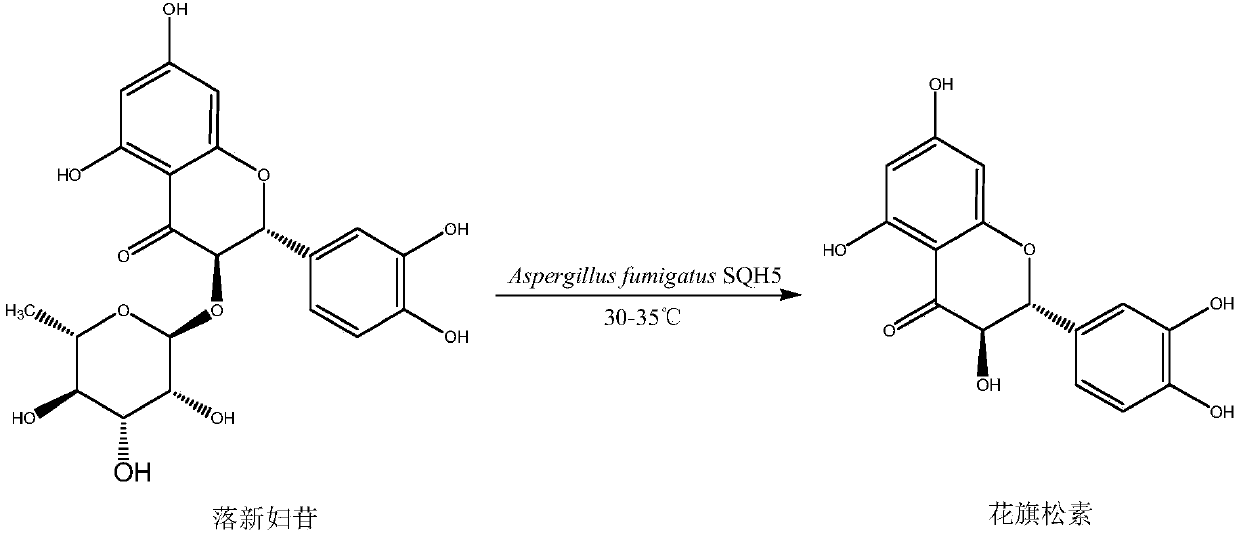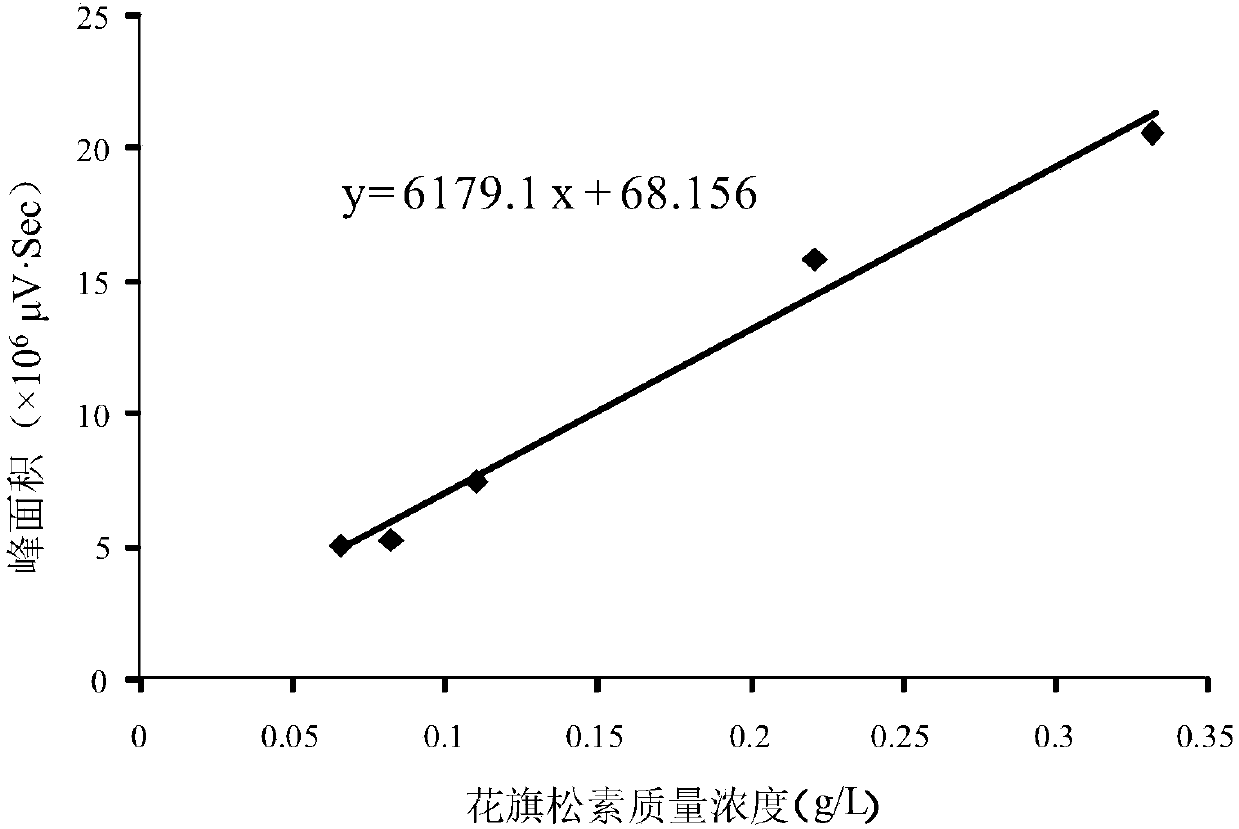Aspergillus fumigates SQH4, and applications thereof in preparation of taxifolin through biotransformation
A technology of Aspergillus fumigatus and microbial strains is applied in the field of biotransformation to prepare taxifolin, which can solve the problems of easily damaged parent nucleus structure, low product yield and the like, and achieves low production cost, high product yield and conversion rate. high effect
- Summary
- Abstract
- Description
- Claims
- Application Information
AI Technical Summary
Problems solved by technology
Method used
Image
Examples
Embodiment 1
[0029] Isolation and screening of embodiment 1 transformed strain
[0030] The Chinese medicinal material Smilax smilax was crushed through a 40-mesh sieve, 60 g of Smilax smilax powder was placed in a conical flask, and a small amount of sterile water was added to moisten it, and cultured at a constant temperature of 28° C. for 3 days. Then take out about 1g and make a suspension with 100mL sterile water, dilute 1×10 6 Spread on potato dextrose agar plate medium (PDA) after doubling, incubate at 28°C for 3 days, pick mold colonies with different colors and shapes and transfer them to fresh PDA plate medium, and culture at 28°C for 3 days to obtain spores Five abundant strains (see Table 1 for strain numbers) were stored in a refrigerator at 4°C for later use.
[0031] Pick 2 rings of spores from the plate culture medium of the above-mentioned strains with inoculation loops, inoculate them into 100mL initial fermentation medium (packed in a 250mL triangular bottle), shake and...
Embodiment 2
[0042] Embodiment 2: bacterial strain SQH4 transformation stability verification
[0043] The strain SQH4 was used as the transformed strain. After seed expansion cultivation, the fermentation liquid was prepared in a 100mL shake flask fermentation scale, and the fermentation liquid containing bacteria was used to transform astilbin to verify the transformation stability of the strain. The specific process steps are as follows:
[0044] (1) Inoculate the bacterial strain SQH4 slant bacterial classification preserved in 4 ℃ of refrigerators on fresh PDA plate culture medium, plate is cultivated at 28 ℃ of constant temperature 2d, and described PDA plate medium composition and preparation method are with embodiment 1;
[0045] (2) Use an inoculation loop to take the spores of the strain SQH4 after activation in step (1) into 50mL seed medium for 2 times, and culture them for 2 days at 28°C and 200r / min constant temperature shaking conditions to obtain a dry cell concentration of ...
Embodiment 3
[0049] Embodiment 3: the taxonomic identification of bacterial strain SQH4
[0050] The SQH4 strain was inoculated on the PDA plate medium, and cultured at 28°C for 2 days, and colonies would grow. The colony is white and fluffy at the beginning, and then turns gray-green; it produces a large number of powdery conidia, the conidia ears are cylindrical, and are in different shades of green, and the conidia are spherical, rough, and green.
[0051] The strain SQH4 was submitted to Sangon Bioengineering (Shanghai) Co., Ltd. for rDNA ITS sequencing, and the sequence size was 574bp. The specific sequence (shown in SEQ ID NO: 1) is as follows:
[0052] 5'-CCTGCGGAAGGATCATTACCGAGTGAGGGCCCTCTGGGTCCAACCTCCCACCCGTGTCTATCGTACCTTGTTGCTTCGGCGGGCCCGCCGTTTCGACGGCCGCCGGGGAGGCCTTGCGCCCCCGGGCCCGCGCCCGCCGAAGACCCCAACATGAACGCTGTTCTGAAAGTATGCAGTCTGAGTTGATTATCGTAATCAGTTAAAACTTTCAACAACGGATCTCTTGGTTCCGGCATCGATGAAGAACGCAGCGAAATGCGATAAGTAATGTGAATTGCAGAATTCAGTGAATCATCGAGTCTTTGAACGCACATTGCGCCCCCTGGTATTCCG...
PUM
 Login to View More
Login to View More Abstract
Description
Claims
Application Information
 Login to View More
Login to View More - R&D
- Intellectual Property
- Life Sciences
- Materials
- Tech Scout
- Unparalleled Data Quality
- Higher Quality Content
- 60% Fewer Hallucinations
Browse by: Latest US Patents, China's latest patents, Technical Efficacy Thesaurus, Application Domain, Technology Topic, Popular Technical Reports.
© 2025 PatSnap. All rights reserved.Legal|Privacy policy|Modern Slavery Act Transparency Statement|Sitemap|About US| Contact US: help@patsnap.com



